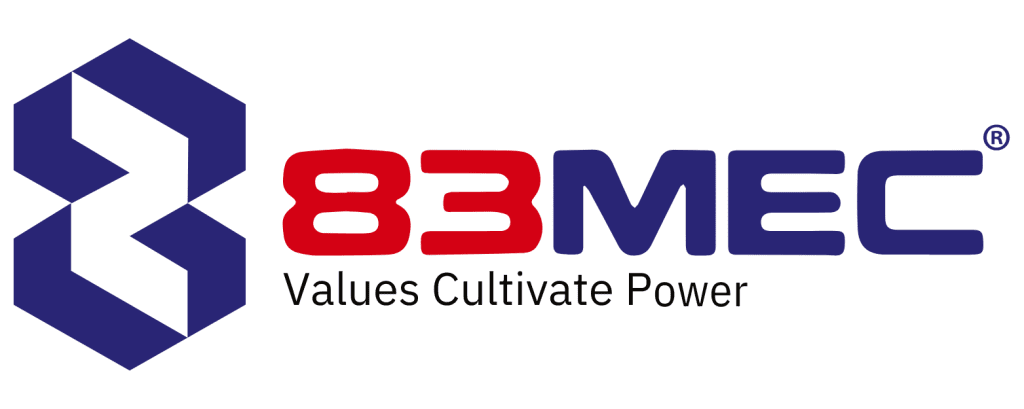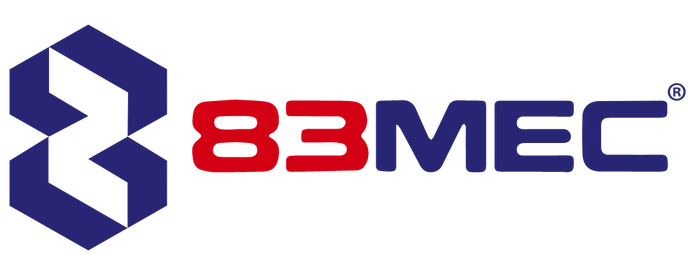Paint, plating, etc., constitute the product’s outermost layer, which plays a significant role not only in terms of aesthetics but also in ensuring the product’s durability and longevity. For the coating or plating to promote its full functionality, however, the pre-treatment of the metal surface is crucial to the coating’s quality.
It is known that paint or plating is a surface-adhesive film component, but a clean, shiny metal surface treatment ensures paint adhesion. Untreated metal surfaces will not guarantee the quality of the paint film, resulting in rust and paint peeling after a period of production. Surface pretreatment at 83MEC will eliminate dirt and rust, leaving a metal surface that is smooth and shiny. The paint and plating layers will be bonded to increase their durability and quality.
- The value of metal surface preparation
At 83MEC, we value every phase of product production, but especially the metal surface treatment phase, because untreated metal surfaces are susceptible to the following negative effects:
When there is an excessive amount of dirt or rust on the metal surface, the paint will not adhere and will not cover the metal surface evenly. Spray paint, resulting in peeling or blistering after prolonged use.
– Poor surface treatment causes the paint film to corrode: Dirt and rust stains on the surface of the poorly treated metal will cause corrosion (rust) from the inside. This long-lasting occurrence will unintentionally have negative effects on the product’s surface, aesthetics, and oxidation rate, as well as the product’s texture, durability, and service life.
2. A number of surface treatments at 83MEC
2.1 Surface treatments by hand
The technique for employing an iron brush – Using an iron brush, we vigorously scrub the metal surface to remove grime, rust, etc. This method is considered one of the simplest and most convenient. Still, it is labor-intensive and requires a high level of skill due to the rapid scratching and peeling of the metal surface, which reduces the adhesion of the primer layer to the metal surface.
The technique of combining an iron brush and a hammer – This method is suitable for local and minor repairs, and it is simple to remove large rust particles. Still, it is simple to deform the component’s surface and generate a loud noise. In addition, simple tools such as sandpaper and razors are used to clean metal surfaces, but they pollute the environment by producing a substantial amount of dust. presently. When using this method of cleaning, the surface’s smoothness and roughness are also inconsistent and dependent on the skill of the craftsman.
2.2 Mechanical procedure
This technique uses combustion heat generators (acetylene, oxygen) to eliminate most of the corrugated iron layer, old paint, grease, scale, dirt, etc., adhering to metal surfaces. This method is very effective at removing old paint stains and oil deposits from metal, but it is not very effective at removing rust. Particularly due to being exposed to heat at high temperatures, the surface of the treated metal is easily deformed and unsightly.
Using a grinding machine, this technique employs a grinding disc-shaped rust friction device to remove stains and rust from angular surfaces, in particular.
Using dry sand: In this technique, small particles of sand and gravel, ranging in size from 0.3 to 1.5 mm, will be sprayed intensely through the gun mouth, striking the metal surface at high velocity. It removes the rust layer, the surface-adhering dirt, and the old paint layer. This method generates a substantial amount of dust, which necessitates effective environmental treatment to safeguard the working environment for workers and the surrounding landscape.
2.3 Method Electrochemical
Before painting a metal surface, it is treated with electric current and various electric degreasing chemicals. This method is frequently employed for small components with high processing difficulty or white steel components with complex structures.
2.3 Chemical procedures
In this method, chemicals such as alkaline water or powder detergents, organic solvents, lye solutions, fixatives, etc., are used to remove rust stains and thoroughly restore the surface. The metallic gloss is more refined than it was before the painting.
This technique uses high-frequency ultrasonic waves (between 20kHz and 40kHz) to clean metal surfaces quickly. This method is used to clean post-assembly products without requiring the disassembly of assembly components before cleaning.
2.3 Laser engineering:
The surface is treated with a high-powered fiber laser source that shoots directly on the surface to be treated, swiftly removing the difficult-to-clean, long-term rust on the surface, particularly the metal welds. outdated paint layer
Increasing daily is the demand for cleaning and pre-treatment of product surfaces. To restore and clean corroded and worn parts, 83 MEC continually strives for and invests in the most modern machinery at its factory. Simultaneously, we are always looking for the quickest, most eco-friendly methods capable of maximizing the nation’s economic efficiency.
(Caption: Surface treatment at 83 Mec)




